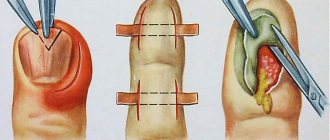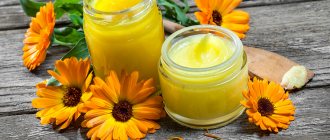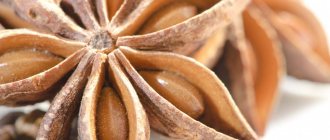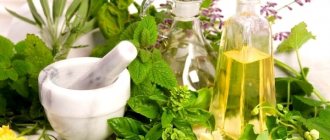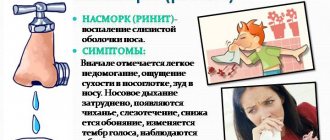Gingivitis is a disease characterized by inflammation of the gum margin, accompanied by swelling and bleeding. The causes of the disease are very diverse; untimely treatment of the problem leads to a worsening of the situation and tooth loss.
Dentists recommend coping with the disease using special pastes, rinses, and other medications. Traditional medicine knows many analogues of purchased drugs. They are no worse, made from natural ingredients, and are easy to prepare at home.
Masks
It is recommended to perform this procedure after eating, after brushing your teeth in advance:
- Beet. Peel and finely grate. After this add Art. l. sunflower oil. Apply to gums and wait 20 minutes. The procedure is performed every 6 hours.
- Potato. It is thoroughly washed with water and finely passed through a grater together with the peel. The resulting mass must be applied for 20 minutes. The course of treatment is 7 days.
- Banana peel. The peel is dried and thoroughly crushed. 1 tbsp. l. the resulting mass is mixed with 3 tbsp. l. sea salt crushed in a coffee grinder. Then olive oil is added until the mixture has the consistency of sour cream. The mixture is spread on the inflammatory focus for 10 minutes. The procedure is performed twice a day with a course of 10 days.
- They take galangal, spice cloves and dried bergenia roots. All ingredients are ground in a coffee grinder and mixed with tooth powder. The resulting mask is first applied to the gums for 3 minutes, and then the teeth are brushed with this mixture, placing it on a toothbrush. This drug is recommended to be used as a preventative measure 2-3 times a week.
After masks, you need to rinse your mouth with a herbal decoction.
Lubricating gums
St. John's wort oil can have a positive effect in lubricating the gums. To prepare it, you need 1 tbsp of oil. l. chopped St. John's wort, pour 100 grams of vegetable oil, then boil, leave for 2-3 hours, strain, and then lubricate the gums. However, in the same way you can prepare oil based on any herb: sage, calendula, mint, etc. These remedies perfectly relieve inflammation and swelling of the gums.
You can also rub a mixture of 4 drops of rose oil and 2 tbsp into your gums. l. vegetable oil.
Rose oil
It is also recommended to lubricate the gums with natural bee honey. This procedure should be carried out 3-4 times a day, 1 hour before meals.
A mixture of ground bergenia, galangal and dried clove flowers mixed with tooth powder in a 1:1 ratio is also perfect for rubbing gums. Rub your gums with this product for 3 minutes for 10 days. In addition, it can be used instead of toothpaste.
Thus, in a fairly short period - 7 - 10 days, you can get rid of acute gingivitis and its symptoms. However, even if the pain, inflammation and bleeding of the gums disappear, it is better to continue treatment for preventive purposes. It is also recommended to consult a dentist.
Medicinal gum
Take 75 grams of beeswax, a tablespoon of honey, 5 drops of mint essential oil and a couple of drops of lemon juice. First, the wax is melted in a water bath, and then the remaining ingredients are added to it one after another.
It is recommended to chew beeswax throughout the day at any time.
The resulting hot mixture is stirred until smooth and left to cool. Then lozenges of various shapes and sizes are created.
Infusions
Pumpkin juice is good for relieving gum inflammation
Effective against the inflammatory process:
- Alder. Take a handful of cones and grind them in a blender. The resulting mass is poured with 200 ml of boiling water and allowed to brew for 1 hour. After this, the drink is filtered. It is necessary to rinse a couple of times a day until recovery occurs.
- Golden mustache. Grind the leaf of the plant, and then add 1 cup of boiling water. Mix with 1/2 tsp. sea salt, after which it is infused in a container with a closed lid for several hours and filtered through a sieve. You should rinse your mouth with this infusion twice a day.
- Celandine. This plant is finely chopped to fill a half-liter jar. Celandine is poured with vodka and allowed to brew for 1 week. It is recommended to rinse the mouth with the resulting infusion in the morning and evening. Dilute with water before use. The liquid must not be swallowed! The course of treatment is 7 days. They also use the juices of some plants to reduce inflammation:
- Pumpkin juice. Pass the mature pumpkin through a juicer or a grater and squeeze the mixture through cheesecloth. The juice should be rinsed in the mouth morning and evening; it is effective against gum inflammation caused by hypovitaminosis.
- Aloe. Leave the leaves of the plant in the freezer overnight, and in the morning finely chop it and extract the juice. They lubricate the gums 3-4 times a day until recovery occurs.
Is it possible to treat gums at home?
How to treat gums at home? Before asking this question, it is imperative to assess the severity of the lesion. To do this, it is best to contact a special institution.
Minor damage is eliminated using special antiseptic and anti-inflammatory agents. Traditional medicine methods are also used, such as rinsing with decoctions, healing solutions, applying applications and compresses. But in order for the effect of home treatment to be achieved faster and the disease does not appear again, you need to know about the principles of oral care.
Attention: Treatment at home is recommended only after consultation with a doctor. All methods of auxiliary therapy presented below should be used only in complex drug treatment to prevent the development of complications. The exception is minor injuries or the use of traditional methods to prevent the occurrence of diseases of the teeth and gums.
Basic principles of proper care
The instructions for caring for teeth and gums contain the following recommendations:
- Be sure to brush your teeth morning and evening . Rinse your mouth after every meal. Use dental floss and toothpicks to remove food debris.
- Watch your diet. The diet should be enriched with vitamins, micro- and macroelements.
- Give up bad habits . If you cannot quit smoking, at least reduce the number of cigarettes during the treatment period.
- Contact your dentist if you have any concerns.
How to prepare a decoction?
Herbal decoctions are an excellent remedy for inflammation and swelling of the gums. If you are not allergic to these plants, you can gently and effectively relieve the symptoms of the disease.
Oak bark and sage:
- Take these ingredients and mix in equal proportions.
- To 1 tbsp. l. Add 1 cup of boiling water to the resulting mixture.
- Allow the solution to cool.
- Rinse every 4 hours. The course of treatment is 10 days.
Take yarrow, oak bark and St. John's wort, 1 tablespoon each:
- All components are mixed.
- Pour 400 ml of water.
- Boil the mixture for 5-6 minutes over low heat.
- Let cool and rinse every 4 hours.
The course of treatment is 1 week.
Sage, oak bark and eucalyptus leaf:
- They take the ingredients and mix them together.
- 1 tbsp. l. vegetable raw materials are poured into a thermos.
- Add 500 ml of boiling water.
- Let it brew for 5 hours.
- Strain and then rinse 7-8 times a day.
Use until inflammation disappears.
Calendula and chamomile:
- Take herbal ingredients one tablespoon at a time.
- Pour in 400 ml of water.
- Boil in a water bath for 7 minutes.
- Leave for 3 hours.
- Rinse every 5 hours until inflammation subsides.
Methods and recipes for treatment with traditional medicine
How to treat gingivitis at home? Almost all methods of treatment with folk remedies are highly effective and help to cope with gingivitis in a fairly short period of time. Many patients prefer natural products; they do not cause allergic reactions, are inexpensive, and easy to use.
Healing herbs
Plants have a powerful anti-inflammatory effect, accelerate healing processes, and perfectly eliminate pathogenic bacteria.
Effective recipes:
- medicinal collection. Take 30 g of dry chamomile, yarrow, calendula, pour 450 ml of boiling water. Leave in a thermos for one hour. Rinse your mouth with the resulting solution for at least 1 minute every day. The number of procedures per day is 3, determine the course of treatment yourself, use the healing decoction until complete recovery;
- celandine and oak bark. The ingredients have a strong astringent property, thanks to which bleeding gums, swelling, and pain disappear. Grind the oak bark and mix with dry celandine herb in equal proportions. Take 150 grams of the resulting mixture, pour two glasses of hot water. Leave for several hours, then strain and rinse your mouth every five hours. Unpleasant symptoms decrease after the first use;
- sage. The plant copes well with acute pain and effectively relieves inflammation. Use ready-made sage tincture (buy at the pharmacy): dilute 25 ml of tincture with the resulting solution in 250 ml of warm water, rinse your mouth for a week (several times a day);
- aloe. The juice of the plant has a healing, antiseptic effect. Gingivitis can be cured by chewing a fresh aloe leaf every day until it becomes a paste. Another way: soak gauze in the juice of the plant, apply to the affected areas of the periodontal tissue, and hold for a quarter of an hour. Carry out therapeutic manipulations every day for 12 days. At the end of the procedure, rinse your mouth with a decoction of chamomile or calendula.
Gum tissue massage
Direct exposure (rubbing) of essential oils into the periodontium improves blood circulation, heals damage, and eliminates pathogenic microflora. The following esters are suitable for therapeutic procedures:
Treatment rules
Treatment goals for gum disease:
- Remove plaque.
- Remove tartar.
- Relieve inflammation.
- Follow preventive measures to avoid relapses.
Therapy is prescribed based on the stage of the disease:
- In stage 1: the dentist performs professional cleaning of tartar and soft plaque. Folk remedies are used to relieve inflammation and reduce pain.
- Stage 2: removal of dental plaque and antimicrobial therapy. Folk remedies are also used at this stage to reduce bleeding and eliminate bad breath.
- In stage 3: in addition to the listed measures, splinting of mobile teeth, the use of antibiotics to suppress suppuration from periodontal pockets and surgical treatment of periodontitis are added.
Conservative treatment
If the disease is detected at an early stage, treatment will not take much time and effort; modern technologies make it possible to get rid of the disease in 10 days; the chronic stage requires longer and more persistent therapy. This link will tell you about the symptoms of ulcerative, necrotizing gingivitis.
The choice of treatment method depends on the following factors:
- form of the disease;
- cause;
- patient's age;
- neglect and severity.
Before starting therapy, professional cleaning is carried out, the teeth are cleaned of mineralized and non-mineralized deposits, after which the clinical picture improves. Some patients, when the first results appear, relax and stop treatment, which in no case should be done. Therapy must be completed, otherwise the disease will relapse.
The main treatment for gingivitis is medication; if the severity of the disease is severe, minor surgery may be required.
Drug treatment
The treatment regimen includes the following medications:
- complex vitamins , including in the form of injections (lincomycin, cyanocobalamin), vitamin C strengthens the walls of blood vessels, reduces bleeding;
- antibiotics - in rare cases, show effectiveness in acute stages, help prevent complications;
- anti-inflammatory drugs (in the form of ointments and gels “Metragil denta”, “Solcoseryl”, “Chlorhexidine”) - their action is aimed at reducing pathological symptoms, helping to reduce the sensations of itching and swelling.
Mandatory brushing of teeth 2 times a day, pain should be ignored, toothpaste should have anti-inflammatory and healing properties, medicinal herbs in the composition strengthen the gums, reduce bleeding and swelling. It is not recommended to use whitening pastes for gingivitis, as they contain a large amount of abrasive substances that irritate the gingival margin.
During pregnancy
If gingivitis during pregnancy is accompanied by pain, bleeding and swelling, you need to go to the hospital. First of all, it is recommended to eliminate the causes of the disease; it is impossible to do without specialized dental care. During the initial examination, the doctor will determine whether there is a threat to tooth enamel, after which treatment is carried out. Further procedures are carried out in the following order:
- professional cleaning, removal of plaque and tartar;
- disinfection of gums;
- use of anti-inflammatory therapy;
- performing a massage to reduce swelling.
The dentist recommends gels, ointments and rinses; in case of severe disease, more serious treatment is prescribed, and sometimes surgical intervention is indicated. Diet plays an important role in the treatment of gingivitis; fruits and vegetables must be included in the diet.
The expectant mother must inform the gynecologist about the disease, after which he prescribes appropriate treatment, prescribes vitamins, and the woman must take all medications strictly as prescribed by the doctor.
Stages of inflammation
periodontitis
Depending on the severity of the inflammatory process, 3 stages are distinguished.
They are independent diseases in themselves:
- Periodontal disease: characterized by slight redness of the gums, burning and itching.
- Gingivitis: bleeding and sensitivity of the gums, especially when brushing your teeth. Swelling, bad breath and pain when chewing food appear.
- Periodontitis: spread of inflammation to the tissue around the teeth and bones of the skull. The gums are loose and swollen, suppuration from periodontal pockets. Loosening and loss of teeth occurs.
How to detect gum disease
The first signs of gum inflammation can be significantly delayed, and at the same time the severity of the disease only worsens.
However, the onset of pathology can be suspected based on the following symptoms:
- at the initial stage, redness and swelling of the gums appear;
- Bleeding may occur during hygiene procedures or when eating;
- pain is possible, increasing as the clinical picture worsens;
- the appearance of bad breath also symbolizes the onset of gum problems;
- the formation of ulcers and other pathological rashes.
The photo below perfectly illustrates the symptoms of gum tissue inflammation.
Sore gums
What are the reasons for the development of inflammation?
Before treating gums at home, you need to know about the reasons that contribute to the appearance of pathology:
- Insufficient oral hygiene and the appearance of dental plaque. The so-called plaque is an excellent breeding ground for bacteria. If it is not removed in time, another more durable formation arises - tartar, which can only be removed in a dental clinic.
- Lack of vitamins in the body, and in particular vitamin C. Such a deficiency provokes the development of scurvy, which can result not only in inflammation of the gums, but also loss of teeth.
- With unqualified dental treatment or incorrect placement of orthodontic structures, mechanical friction and other pathological processes can occur, which lead to infection of the gingival tissue.
- The presence of chronic or acute inflammatory processes can significantly reduce immune defense, and therefore activate the activity of pathogenic bacteria.
- Taking certain groups of medications can cause a decrease in salivation, and saliva is known to have an antibacterial effect.
- The presence of a genetic predisposition can also negatively affect the gums.
- Diabetes mellitus, hormonal changes, cardiovascular disorders and gastrointestinal pathologies provoke diseases of the oral mucosa.
- Smoking and alcohol abuse dry out the mucous membranes and cause dental problems.
- Advanced caries is one of the reasons for the development of more serious complications in the teeth and gums.
Only a small part of the possible reasons were presented above. However, it is imperative to understand the etiology of gum problems in order to eliminate provoking factors in the future.
Causes of gum inflammation
Causes
There are many sources of the disease. The most common of them:
- Poor oral hygiene.
- The appearance of tartar.
- Weakening of the immune system.
- Hypovitaminosis, vitamin deficiency.
- Burdened heredity.
- Pregnancy and hormonal imbalance.
- Tobacco smoking.
- Drinking alcohol, coffee.
- Taking medications that reduce salivation.
- Poor quality fillings and dental crowns that injure the gums.
- Menstrual cycle.
- Diseases of the gastrointestinal tract.


